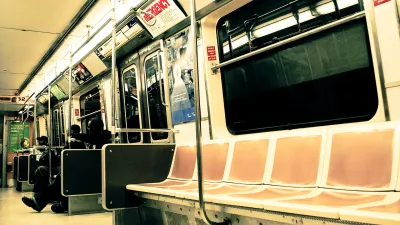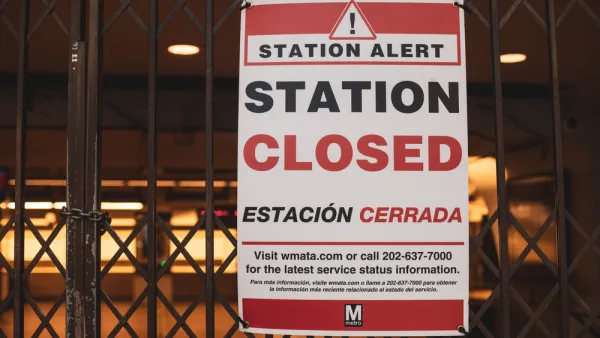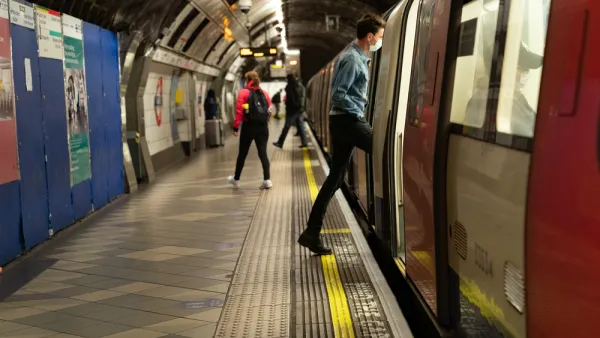The realities of the coronavirus are most obvious in the declining ridership, and revenues, on public transit in the United States, but it's not enough to shut down public transit when so many people depend on safe, healthy service.

TransitCenter has produced analysis about the ongoing effects of the coronavirus on public transit in the United States, producing a jaw-dropping estimate for the amount of money transit agencies will come fall short of expected revenue for the year given the reduced number of riders on public transit—despite the critical role of public transit in the public health crisis.
Among the millions of people still relying on public transit, according to the post, are "Health care workers going to and from their shifts; cleaners, warehouse staff, and food workers reporting to their jobs; utility employees; heads of household making trips to grocery stores and pharmacies."
The need for continued public transit service is challenged by the risk of close proximity among infected people. Cutting service or shutting down operations isn't an option: "Public transit agencies cannot weather this crisis through cuts. In order to maintain proper social distancing, transit agencies must operate enough service so that riders are not subject to crowded vehicles."
In that context, TransitCenter for the first time estimates the amount of revenue transit agencies are likely to miss out on in 2020, coming up with two figures: $26 billion or $38 billion. So far in the developing crisis, numerous transit agencies have made specific requests to Congress for more than $1 billion in emergency relief, and the American Public Transit Association (APTA) made a request for $12.9 billion in relief from the federal government, as reported by Planetizen last week.
The TransitCenter analysis also provides "snapshots of current impacts on local agencies" and "two scenarios outlining the potential cumulative impact on transit agencies nationwide." Those two scenarios represent the low- and the high-end estimates at either side of the $26 billion and $38 billion figures mentioned above.
FULL STORY: Estimated Financial Impact of COVID-19 on U.S. Transit Agencies: $26-$38 Billion Annually

National Parks Layoffs Will Cause Communities to Lose Billions
Thousands of essential park workers were laid off this week, just before the busy spring break season.

Retro-silient?: America’s First “Eco-burb,” The Woodlands Turns 50
A master-planned community north of Houston offers lessons on green infrastructure and resilient design, but falls short of its founder’s lofty affordability and walkability goals.

Delivering for America Plan Will Downgrade Mail Service in at Least 49.5 Percent of Zip Codes
Republican and Democrat lawmakers criticize the plan for its disproportionate negative impact on rural communities.

Test News Post 1
This is a summary

Test News Headline 46
Test for the image on the front page.

Balancing Bombs and Butterflies: How the National Guard Protects a Rare Species
The National Guard at Fort Indiantown Gap uses GIS technology and land management strategies to balance military training with conservation efforts, ensuring the survival of the rare eastern regal fritillary butterfly.
Urban Design for Planners 1: Software Tools
This six-course series explores essential urban design concepts using open source software and equips planners with the tools they need to participate fully in the urban design process.
Planning for Universal Design
Learn the tools for implementing Universal Design in planning regulations.
EMC Planning Group, Inc.
Planetizen
Planetizen
Mpact (formerly Rail~Volution)
Great Falls Development Authority, Inc.
HUDs Office of Policy Development and Research
NYU Wagner Graduate School of Public Service





























